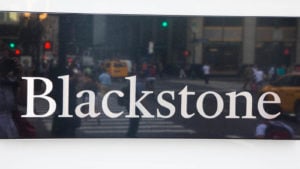
Bloomberg recently discussed how a handful of investment firms control the $1.6 trillion private credit market, including Ares Management (NYSE:ARES) and Blackstone (NYSE:BX).
“Private lenders have swooped into a void left by banks shying away from riskier loans amid fears of an economic slowdown. In 2022, the last year for which data is available, direct lenders deployed $333 billion of cash, an increase of 60% over the previous year, according to estimates in the report,” Bloomberg reported.
So, what is private credit? And how can average do-it-yourself investors get in on the action?
“Private credit covers an array of strategies that span the capital structure and borrower type. These range from senior secured loans for blue-chip corporate borrowers, to junior unsecured credit for financing new building construction, to loans against specialized assets such as railcars and airplanes or contractual revenue streams like royalties and subscription services, to distressed situations,” states Goldman Sachs Asset Management’s website.
Most investors might want to invest in private credit because the asset class delivers yields of 3-6% in excess of traditional bonds and other fixed-income investments.
However, with the most prominent players controlling the lion’s share of this market, there aren’t many ways DIY investors can get involved.
Here are three private credit stocks to buy to give yourself a tiny piece of the private credit asset class.
Blackstone (BX)

Blackstone is one of the world’s largest alternative asset managers, with over $1 trillion under management (AUM) invested in various asset classes, including private credit.
The private credit segment of Blackstone’s business is held within its Credit & Insurance segment, which is divided into two strategies: private credit and liquid credit. Its Blackstone Credit business is one of the largest credit-oriented asset managers in the world, with AUM of $297.2 billion as of Q3 2023, 1% higher than Q2 2023.
In the third quarter, its Credit and Insurance business generated $303.9 million in distributable earnings, up 7% from a year earlier. The Blackstone Private Credit Fund, launched in 2021, has $61.3 billion that it lends directly to businesses needing debt capital. It has generated a 10% annual return for investors from its inception on Jan. 7, 2021.
Blackstone stock is up 40% year-to-date and 216% over the past five years. Yielding 3.1%, consider owning private credit investments to increase revenue streams.
Ares Management (ARES)

Based in Los Angeles, Ares Management is a smaller version of Blackstone with a nearly $34 billion market capitalization.
It has three primary operating segments: Credit, Private Equity, and Real Estate. Its credit business has $269 billion in AUM, making it one of the largest self-originating direct lenders in the U.S., Europe, and Asia. It is also Ares’ largest segment by AUM.
Moreover, it utilizes many strategies, including direct lending to middle-market companies. DIY investors can access this strategy through Ares Capital (NASDAQ:ARCC), its publicly traded Business Development Company (BDC) that lends directly to middle-market companies. It is one of the largest in the U.S.
Approximately 43% of ARCC’s loans are first-lien senior secured loans, with second-lien senior secured loans accounting for another 17%. The remaining 40% is in other forms of debt and equity. Ivey Hill Asset Management L.P., which Ares Capital owns outright, manages some of its middle market funds for the BDC. It represents the most significant portfolio holding of the BDC.
ARCC currently yields nearly 10%. If you’re looking for enhanced income returns and are okay with some risk, this could be for you. However, if you’re looking for total return, ARES is the better way to go.
Brookfield Asset Management (BAM)

Next on the list of private credit companies to consider is Brookfield Asset Management (NYSE:BAM), an asset-light alternative asset manager. Brookfield Corp. (NYSE:BN) formerly owned it, which changed its name from Brookfield Asset Management when it spun off 25% of BAM in December 2022. The company’s shareholders got 0.25 shares of BAM for every share of BN. It retains 75% of BAM.
The spin-off was done so that BAM would be more easily evaluated as the fee-generating segment of Brookfield’s overall business. At the same time, Brookfield Corp. would become a direct investor with other partners in projects managed by BAM.
As a result, long-term investors could invest in BN for future capital appreciation. At the same time, BAM’s cash flow generation would make it ideal for income investors. BAM currently yields 3.8%, while BN’s is just 0.8%.
Furthermore, in Q3 2023, BAM generated $778 million from its base management and advisory fees, up from $715 million a year earlier. Simultaneously, its net revenue, including investment income, was $893 million, up 7% year-over-year. Its net income was $494 million, 25.1% higher than a year earlier, and a very high 55% net margin. It paid out $125 million in dividends in the third quarter, a low payout ratio of 25% of its net income.
On Sept. 11, Brookfield Asset Management announced a strategic partnership with Societe Generale (OTCMKTS:SCGLY) to create a 10-billion euros ($11.0 billion) private credit fund with 2.5-billion euros ($2.7 billion) seed funding.
Thus, BAM is an excellent way to play the private credit market if you’re an income investor.
On the date of publication, Will Ashworth did not have (either directly or indirectly) any positions in the securities mentioned in this article. The opinions expressed in this article are those of the writer, subject to the InvestorPlace.com Publishing Guidelines.




